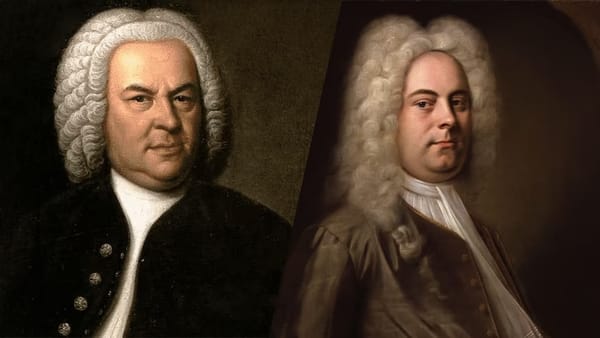The Evolution of Classical Music in the Digital Age
Classical music’s digital evolution is bridging tradition and innovation. Streaming, AI, and virtual concerts are reshaping how it’s experienced, attracting younger audiences and opening global access to this timeless art form.

Classical music has always carried an air of timelessness. For centuries, it’s been performed in grand concert halls, accompanied by the hum of hushed audiences. But now, things are changing. Technology has entered the scene, bringing new ways to perform, consume, and experience the genre. Streaming platforms, virtual concerts, and even artificial intelligence are shaping the future of classical music. The shift has opened doors for a younger audience, made performances accessible worldwide, and transformed how artists share their work. While there’s still something magical about attending a live symphony, the digital age is offering fresh opportunities.
How Streaming is Changing Classical Music Consumption
Gone are the days when people relied on CDs or live radio broadcasts to hear their favourite symphonies. Streaming platforms have changed everything. Services like Spotify, Apple Music, and YouTube make classical music available to anyone with a smartphone. More importantly, they’re introducing the genre to new listeners who might not otherwise explore it.
Algorithms suggest playlists like Classical Essentials or Chill with Chopin, helping people discover composers without digging through old vinyl or collections. At the same time, classical-specific platforms like IDAGIO and Apple Music Classical cater to a niche crowd. These platforms deliver high-quality sound, advanced search features, and collections specifically tailored to classical fans. For example, a user can easily search by composer, orchestra, conductor, or year of recording. This kind of access would’ve been unimaginable 20 years ago.
However, there’s still a challenge. Classical recordings don’t always fit neatly into streaming platforms. Unlike pop music, where tracks are short and simple, symphonies stretch over 30 minutes. Metadata—like artist credits and individual track breakdowns—can get messy. Still, streaming has pushed classical music into modern spaces, making it part of daily playlists and even viral moments.
The Rise of Virtual Concerts and Digital Performances
The pandemic accelerated the need for digital concerts, but they’ve stuck around for good reason. Platforms like the Berlin Philharmonic’s Digital Concert Hall let audiences stream world-class performances from their living rooms.
The convenience is unmatched. Someone in rural Canada can watch a live performance by the London Symphony Orchestra without stepping outside. Virtual concerts have also become an exciting alternative to Hopin, a platform that rose in popularity for hosting events online. Classical music organizations are now using dedicated tools to stream concerts, offer subscription services, and sell digital tickets. It’s not just about replicating a live concert, either.
Some orchestras have experimented with 360-degree virtual reality. VR headsets allow listeners to “sit” in the front row and immerse themselves in every note. These innovations are attracting younger crowds, too. Traditional concerts can be intimidating. Digital spaces offer flexibility: you can pause a performance, watch on your schedule, or explore parts of a show at your own pace. While purists argue nothing can replace the atmosphere of a live hall, digital concerts are carving out their own audience. For some, it’s the only way to access classical music performed at its highest level.
Technology and the Future of Classical Music Education
Classical music education is another area seeing huge changes.Back in the day, lessons meant weekly trips to a teacher’s house, lugging heavy sheet music and instruments. Today, students can learn from world-renowned musicians through platforms like MasterClass or YouTube. Video lessons bring expert knowledge to anyone willing to learn. Virtual lessons over Zoom or Skype are now the norm. Teachers and students connect across continents, removing barriers of geography. This shift has made classical music training accessible to aspiring musicians who might not have local resources.
Tools like SmartMusic and other AI-powered apps are even offering real-time feedback on performance. These platforms analyze pitch, timing, and technique, making practice sessions more productive.
Digital sheet music libraries are another game-changer. Platforms like IMSLP or MuseScore provide massive collections of free, downloadable sheet music. Gone are the days of spending hours digging through music stores. Now, musicians have thousands of compositions at their fingertips. Technology hasn’t replaced traditional practice, but it’s certainly made learning easier and more affordable for everyone.
The Role of AI in Composition and Performance
Artificial intelligence has been making waves in classical music, too. Projects like OpenAI’s MuseNet use AI to create classical-style compositions in the style of composers like Bach or Beethoven. While AI can’t replace human creativity, it’s sparking some fascinating experiments. Composers are now blending traditional orchestral techniques with modern tools to produce something entirely new.
Digital software like Logic Pro or Ableton has become part of the modern classical toolkit. Musicians are layering electronic sounds with traditional instruments, pushing the boundaries of composition.
It’s not just in recording studios either. Live performances are beginning to include digital instruments and soundscapes. For example, orchestras have experimented with MIDI pianos and electronic string effects to expand their sonic range. Of course, the rise of AI isn’t without its controversies. Some critics argue it dilutes the soul of classical music, turning art into an algorithm. But others see it as a tool—one that can spark creativity and bring the genre into the future. Whether for better or worse, AI is here to stay, and it’s already making its mark on classical music.
How Classical Music is Thriving in Film, Games, and Social Media
One of the most exciting things about classical music today is how it’s showing up in new places. Movie soundtracks and video games have breathed fresh life into orchestral music.
Take Hans Zimmer’s Inception score or the Final Fantasy video game concerts—both highlight how classical instruments can create intense, emotional soundscapes.Social media is another surprising space where classical music is finding fans. Platforms like TikTok and Instagram have made short classical clips go viral.
A dramatic piano riff or violin solo can rack up millions of views, exposing younger generations to composers they’ve never heard before. Even if someone doesn’t recognize Bach or Tchaikovsky, they might stumble across a sped-up version of their work on a trending video.
Classical music’s adaptability to new media is a big part of its survival. It’s showing up in unexpected places, making people realize it’s not just a genre for old concert halls. By connecting with movies, games, and social trends, classical music continues to find fresh audiences.
What’s Next for Classical Music?
So where does classical music go from here? The future seems full of opportunities. Virtual concerts will only get more sophisticated.Imagine orchestras using augmented reality to create immersive performances that combine sight and sound in new ways.
Streaming platforms will likely evolve, improving how they catalog and share recordings.Younger listeners are already driving many of these changes. Their preference for flexible, on-demand experiences has reshaped how classical music is delivered. But classical music institutions also need to adapt.
Preserving the art form while embracing innovation is the key to keeping it alive. There’s no doubt technology is shaking things up. But classical music has always been about evolution. From candle-lit opera houses to state-of-the-art concert streams, it’s a genre that’s constantly finding new ways to connect with people. Technology isn’t replacing classical music. It’s giving it a new stage. For musicians, listeners, and creators alike, this is a moment worth paying attention to. Classical music’s digital journey is only just beginning, and the possibilities are endless.





